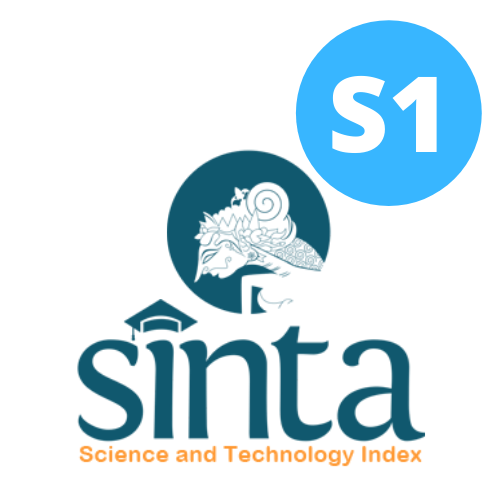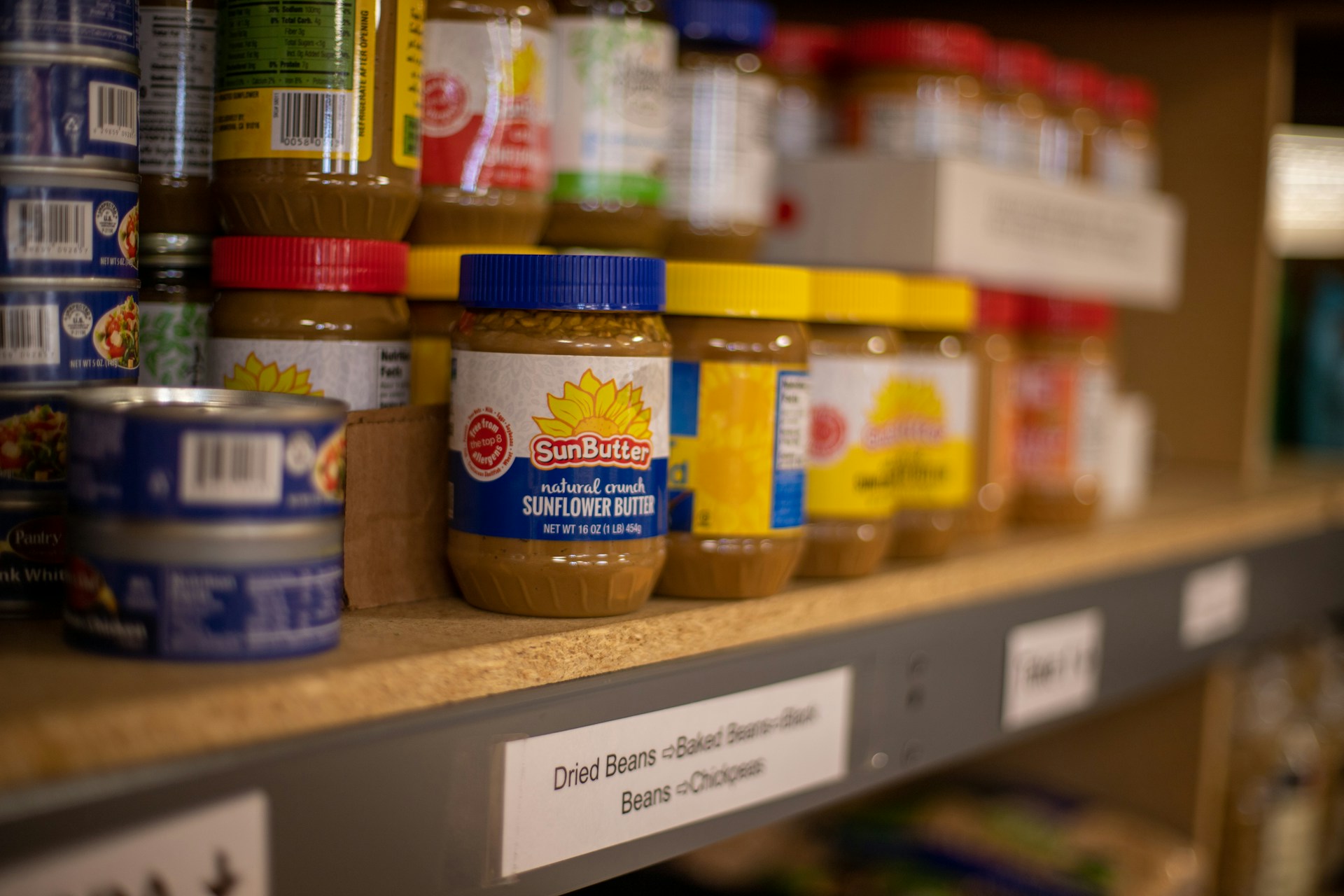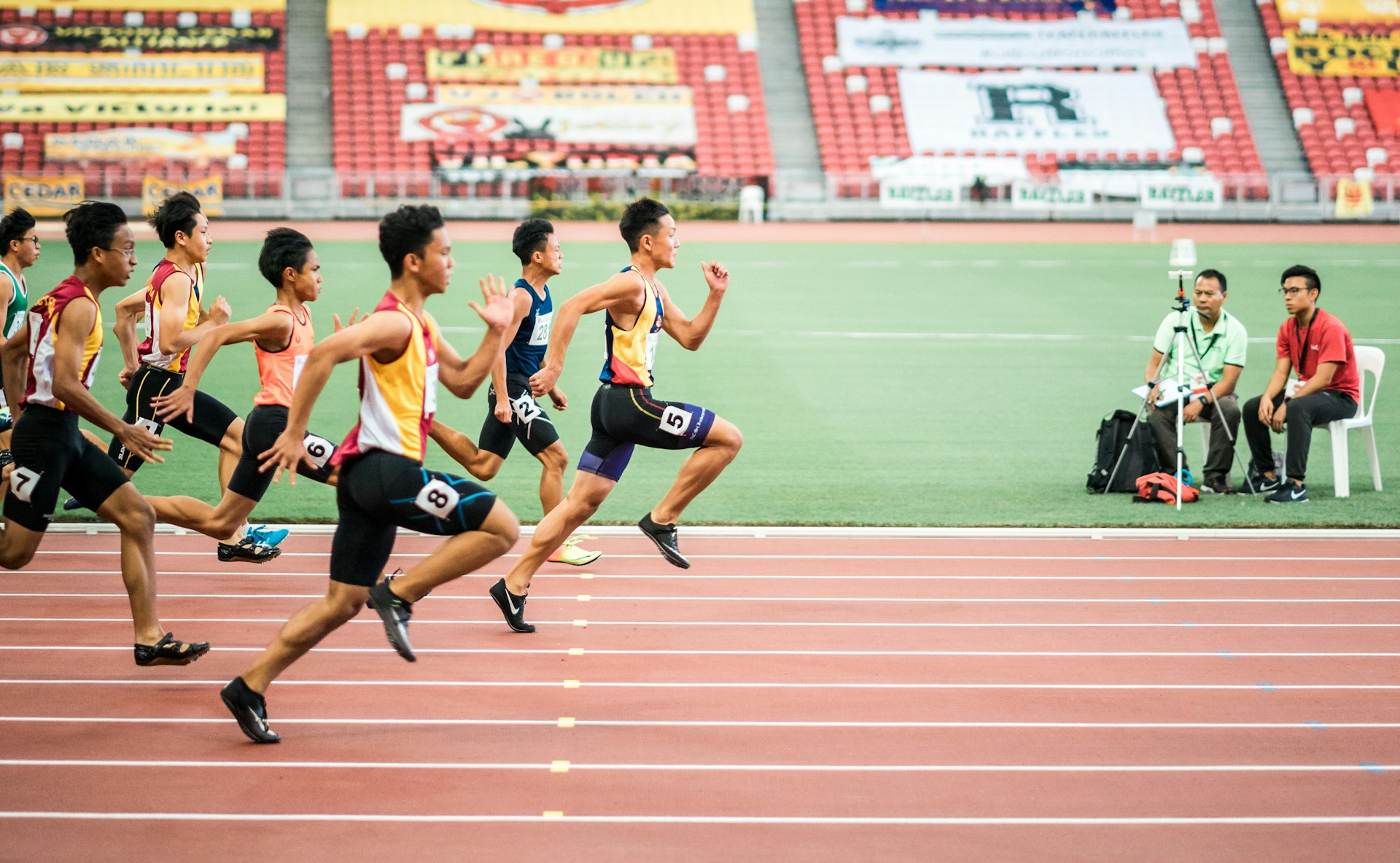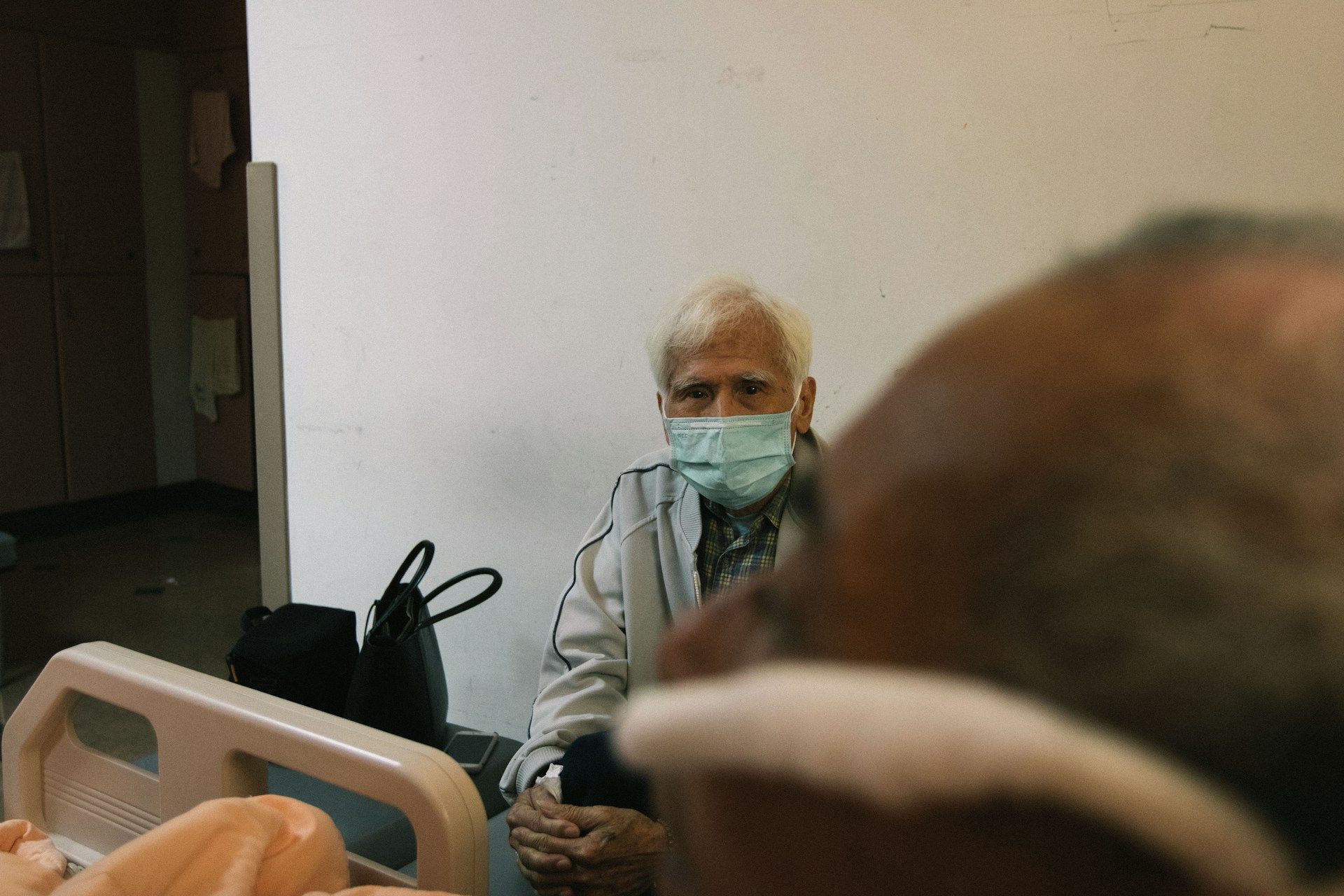The Difference in Effectiveness of Booklet and Video Media Education on Balanced Nutrition Knowledge of Caregivers for Children with Autism Spectrum Disorder in Jabodetabek Area
Perbedaan Efektivitas Edukasi Media Booklet dan Video terhadap Pengetahuan Gizi Seimbang Pendamping Anak Autism Spectrum Disorder di Wilayah Jabodetabek

Downloads
Background: Children with Autism Spectrum Disorder (ASD) require adequate and proper balanced nutrition to support their growth, development, and to prevent nutritional problems. One of the factors influencing nutritional problems is the lack of knowledge among caregivers. Nutrition education can be applied to improve the knowledge of caregivers of children with ASD about balanced nutrition. The use of educational media in the form of booklet and video are considered effective. However, the differences in effectiveness between the two media needs to be analyzed.
Objectives: To determine the differences in the effectiveness of booklet and video media education on the balanced nutrition knowledge among caregivers of children with ASD in the Jabodetabek area.
Methods: This study used a quasi-experimental design with a two-group pre-test post-test design. The sample was caregivers of children with ASD in Jabodetabek area who met inclusion and exclusion criteria, totalling 60 people each in the control and experimental group. The sampling technique was cluster sampling with a research instrument in the form of a questionnaire. Data analysis was conducted using univariate analysis and bivariate analysis was conducted using Mann-Whitney test.
Results: The Mann-Whitney test result showed that p-value 0.003 (p-value<0.05) indicating both booklet and video media were effective. The mean score in the video group was greater at 67.23, compared to the mean in the booklet group at 53.77.
Conclusions: Nutritional education using video media is more effective in improving the balanced nutrition knowledge of caregivers of children with ASD compared to booklet.
Kementrian Kesehatan Republik Indonesia. Peraturan Menteri Kesehatan Republik Indonesia Nomor 25 Tahun 2014. (Jakarta, 2014).
Sabani, F. Perkembangan Anak-anak Selama Masa Sekolah Dasar (6 - 7 Tahun). Jurnal Kependidikan 8, 91 (2019). DOI: https://doi.org/10.58230/27454312.71.
Ajhuri, K. F. Psikologi Perkembangan: Pendekatan Sepanjang Rentang Kehidupan. (Penebar Media Pustaka, Yogyakarta, 2019).
Zeidan, J. et al. Global Prevalence of Autism: A Systematic Review Update. Autism Research 15, 778–790 (2022). DOI: https://doi.org/10.1002/aur.2696.
Walensky, R. P. et al. Prevalence and Characteristics of Autism Spectrum Disorder Among Children Aged 8 Years-Autism and Developmental Disabilities Monitoring Network, 11 Sites, United States, 2018. (2021).
Walensky, R. P. et al. Prevalence and Characteristics of Autism Spectrum Disorder Among Children Aged 8 Years-Autism and Developmental Disabilities Monitoring Network, 11 Sites, United States, 2020. (2023).
Kementrian Pendidikan dan Kebudayaan Republik Indonesia. Statistik Sekolah Luar Biasa (SLB) 2020/2021. www.pdspk.kemdikbud.go.id (2021).
Kementrian Pendidikan dan Kebudayaan Republik Indonesia. Statistik Sekolah Luar Biasa (SLB) 2017/2018. www.pdspk.kemdikbud.go.id (2017).
Sopiandi, R. Pengetahuan Gizi Ibu, Pola Makan, Asupan Zat Gizi dan Status Gizi Anak dengan Autism Spectrum Disorder (ASD). Journal Uhamka Arsip Gizi dan Pangan 2, 45–53 (2017). E-ISSN: 2579-888X.
Aprilia, N. Hubungan Perilaku Makan, Asupan Energi, Asupan Zat Gizi Makro, dan Penerapan Diet Gluten Free Casein Free (GFCF) dengan Status Gizi Anak Autism Spectrum Disorder (ASD) di Jabodetabek Tahun 2023. (UPN ‘Veteran’ Jakarta, Jakarta, 2023).
Hill, A. P., Zuckerman, K. E. & Fombonne, E. Obesity and Autism. Pediatrics 136, 2–3 (2015). DOI: http://dx.doi.org/10.1542/peds.2015-1437.
Criado, K. K., Scahill, L., Sharp, W. G. , & McCracken, C. E. Overweight and Obese Status in Children with Autism Spectrum Disorder and Disruptive Behavior. Journal Autism 22, 6–8 (2018). DOI: https://doi.org/10.1177/1362361316683888.
Nuryanto, Adriyan Pramono, Niken Puruhita & Siti Fatimah Muis. Pengaruh Pendidikan Gizi terhadap Pengetahuan dan Sikap Tentang Gizi Anak Sekolah Dasar. Jurnal Gizi Indonesia 3, 32–36 (2014). DOI: https://doi.org/10.14710/jgi.3.1.121-125.
Vandeweghe, L. et al. Perceived Effective and Feasible Strategies to Promote Healthy Eating in Young Children: Focus Groups with Parents, Family Child Care Providers and Daycare Assistants. BMC Public Health 16, 2–12 (2016). DOI: https://doi.org/10.1186/s12889-016-3710-9.
Notoatmodjo, S. Promosi Kesehatan Dan Perilaku Kesehatan. (Rineka Cipta, Jakarta, 2014).
Jatmika, S. & Maulana, M. Pengembangan Media Promosi Kesehatan. (K-Media, Yogyakarta, 2019).
Indah, J. & Junaidi. Efektivitas Penggunaan Poster dan Video dalam Meningkatkan Pengetahuan dan Sikap Tentang Buah dan Sayur Pada Siswa Dayah Terpadu Inshafuddin. Jurnal SAGO Gizi dan Kesehatan 2, 129–135 (2021). DOI: http://dx.doi.org/10.30867/gikes.v2i2.311.
Dianna, Septianingsih, N. & Pangestu, J. F. Perbedaan Pengetahuan Ibu Balita Sebelum dan Sesudah Diberikan Penyuluhan tentang Stunting Melalui Media Video dan Leaflet di Wilayah Kerja Puskesmas Saigon Kecamatan Pontianak Timur. Jurnal Kebidanan Khatulistiwa 6, 7–15 (2020). DOI: https://doi.org/10/30602/kjj/v6il.493.
Chandra, N. N. & Agustina. The Effect of Health Promotion with Booklet and Video Media on Knowledge of Balanced Nutrition on Adolescent at SMKN 1 Cikulur Banten. Journal of Public Health Research and Community Health Development 5, 45–53 (2021). DOI: https://doi.org/10.20473/jphrecode.v5i1.22202.
Puspikawati, S. I. et al. Pendidikan Gizi tentang Anemia pada Remaja di Kecamatan Banyuwangi Jawa Timur. Jurnal Media Gizi Kesmas (Universitas Airlangga, 2021). DOI: http://dx.doi.org/10.20473/mgk.v10i2.2021.278-283.
Handayani, R. & Yulaikah, S. Effectiveness of Booklet and Video as A Prenatal Health Education Media for Preparation and Decrease in Labor Anxiety. Journal of Midwifery 4, 39–49 (2019). DOI: http://dx.doi.org/10.25077/jom.4.2.39-49.2019.
Azahra, A. S. Perbedaan Efektivitas Edukasi Gizi dengan Media Booklet dan Video terhadap Pengetahuan dan Perilaku PHBS di SDN Sukasari 5 Kota Tangerang. (UPN ‘Veteran’ Jakarta, Jakarta, 2022).
Rafni Melisa Putri, Ratna Sari, Uswatun Hasanah & Zaqqi Habibillah. Manfaat dan Kesenjangan Alat Pendidikan di Era Digital. Jurnal Yudistira: Publikasi Riset Ilmu Pendidikan dan Bahasa 2, 46–51 (2024). DOI: https://doi.org/10.61132/yudistira.v2i1.379.
Zelezny-Green, R., Vosloo, S. & Conole, G. Digital Inclusion for Low-Skilled and Low-Literate People. http://www.unesco. (2018).
Kementrian Sosial Republik Indonesia. Sistem Informasi Management Penyandang Disabilitas. (2021).
Creswell, J. W. Research Design: Qualitative, Quantitative, and Mixed Method Approaches. (Library of Congress Cataloging, Los Angeles, 2018).
Sugiyono. Metodelogi Penelitian Kuantitatif Dan Kualitatif. (ALFABETA, Bandung, 2019).
Marjan, L. Hubungan Tingkat Pendidikan terhadap Tingkat Pengetahuan Orangtua dalam Swamedikasi Demam pada Anak Menggunakan Obat Parasetamol. (Universitas Islam Negeri Maulana Malik Ibrahim Malang, Malang, 2018).
Arbella, V., Widyastuti, E. & Rahayu. Hubungan Pengetahuan dan Sikap Ibu tentang Keluarga Sadar Gizi dengan Perilaku Sadar Gizi Keluarga Balita di Desa Karangsono Kecamatan Kwadungan Kabupaten Ngawi Tahun 2013. Jurnal Kebidanan 2, 47–55 (2013). DOI: https://doi.org/10.31983/JKB.V2I5.106.
Mulyana, D. & Maulida, K. Faktor-Faktor yang Mempengaruhi Pengetahuan Ibu tentang Makanan Pendamping ASI pada Bayi 6-12 Bulan Tahun 2019. Jurnal Ilmiah Kebidanan Indonesia 9, 100–101 (2019). DOI: http://dx.doi.org/10.33221/jiki.v9i03.353.
Cahyaningrum, E. & Siwi, A. Faktor-Faktor yang Berhubungan dengan Tingkat Pengetahuan Ibu dalam Penanganan Demam pada Anak di Puskesmas I Kembaran Kabupaten Banyumas. Bidan Prada 9, (2018). E-ISSN: 2620-9411.
Naimah, N. & Setyaningsih, W. Learning Clean and Healthy Living Behavior with Pop-Up Book and Poster Media on Children Ages 6-12 Years at Elementary School, Malang. Indonesian Midwifery and Health Sciences Journal 5, 174–185 (2021). DOI: http://dx.doi.org/10.20473/imhsj.v5i2.2021.174-185.
Presiden Republik Indonesia. Undang-Undang Republik Indonesia Nomor 13 Tahun 2003 Tentang Ketenagakerjaan. (Indonesia, 2003).
Kamilah, N. H. & Lestari, F. S. Pengaruh Media Edukasi Booklet Gizi Seimbang Balita dengan Pemanfaatan Pangan Lokal terhadap Peningkatan Pengetahuan Kader. Jurnal Kesehatan Siliwangi 3, 474–480 (2023). DOI: https://doi.org/10.34011/jks.v3i1.1031.
Wulansari, R. Efektivitas Model Edukasi Booklet terhadap Pengetahuan Gizi pada Ibu Balita di Wilayah Kerja Puskesmas Harapan Baru Kota Samarinda. (Politeknik Kesehatan Kementrian Kesehatan Kalimantan Timur, Kalimantan Timur, 2019).
Alkariema, R. Pengaruh Edukasi Gizi dengan Media Video terhadap Peningkatan Pengetahuan Gizi Ibu dan Perbaikan Asupan Zat Gizi pada Anak Usia Prasekolah (Studi Quasi Eksperimen di TK Islam As-Syiroj Kecamatan Cilawu Kabupaten Garut Tahun 2023). (Universitas Siliwangi, 2023).
Syarifah, N., Dewy, T. S. & Putra, F. Perbandingan Edukasi Stunting Antara Media Audiovisual dengan Media Booklet terhadap Tingkat Pengetahuan dan Sikap Ibu Balita Stunting Usia 6-24 Bulan di Wilayah Kerja Puskesmas Darul Azhar Tahun 2023. Jurnal Mahasiswa Kesehatan 5, 83–93 (2023). DOI: https://doi.org/10.33859/dksm.v14i2.901.
Br H, D. T., Simanjutak, B. Y. & Wahyudi, A. Pengaruh Edukasi Gizi Menggunakan Media Audio Visual (Video) terhadap Pengetahuan dan Sikap Gizi Seimbang. Jurnal Kesehatan Ternate 13, 19–24 (2020). ISSN: 2597-7520.
Ardie, H. & Sunarti, S. Pengaruh Media Video terhadap Pengetahuan dan Sikap Tentang Gizi Seimbang pada Siswa Kelas V di SDN 016 Samarinda Seberang. Borneo Student Research 284–289 (2019). E-ISSN: 2721-5725.
Dale, E. Audio-Visual Methods in Teaching. (Dryden Press, New York, 1969).
He, Z. et al. Factors Influencing Health Knowledge and Behaviors Among the Elderly in Rural China. Int J Environ Res Public Health 13, 2–16 (2016). DOI: https://doi.org/10.3390/ijerph13100975.
Sutrisno, S. & Tamim, H. Hubungan Tingkat Pendidikan dan Pengetahuan Ibu Tentang Gizi dengan Status Gizi pada Balita di Posyandu Abung Timur Wilayah Kerja Puskesmas Bumi Agung Kabupaten Lampung Utara Tahun 2020. Jurnal Ilmu Medis Indonesia 2, 77–83 (2023). DOI: https://doi.org/10.35912/jimi.v2i2.1513.
Kidd, N., Prasad, D., Cunningham, E., Cardoso, A. & Frey, N. The Relationship Between Parental Bonding and Mood, Anxiety and Related Disorders in Adulthood: A Systematic Review and Meta-Analysis. J Affect Disord 307, 221–236 (2022). DOI: https://doi.org/10.1016/j.jad.2022.03.069.
Shaunessy‐Dedrick, E., Suldo, S., Roth, R. & Fefer, S. Students’ Perceptions of Factors That Contribute to Risk and Success in Accelerated High School Courses. The High School Journal 98, 109–137 (2015). DOI: http://dx.doi.org/10.1353/hsj.2015.0002.
Copyright (c) 2024 Amerta Nutrition

This work is licensed under a Creative Commons Attribution-ShareAlike 4.0 International License.
AMERTA NUTR by Unair is licensed under a Creative Commons Attribution-ShareAlike 4.0 International License.
1. The journal allows the author to hold the copyright of the article without restrictions.
2. The journal allows the author(s) to retain publishing rights without restrictions
3. The legal formal aspect of journal publication accessibility refers to Creative Commons Attribution Share-Alike (CC BY-SA).
4. The Creative Commons Attribution Share-Alike (CC BY-SA) license allows re-distribution and re-use of a licensed work on the conditions that the creator is appropriately credited and that any derivative work is made available under "the same, similar or a compatible license”. Other than the conditions mentioned above, the editorial board is not responsible for copyright violation.












































